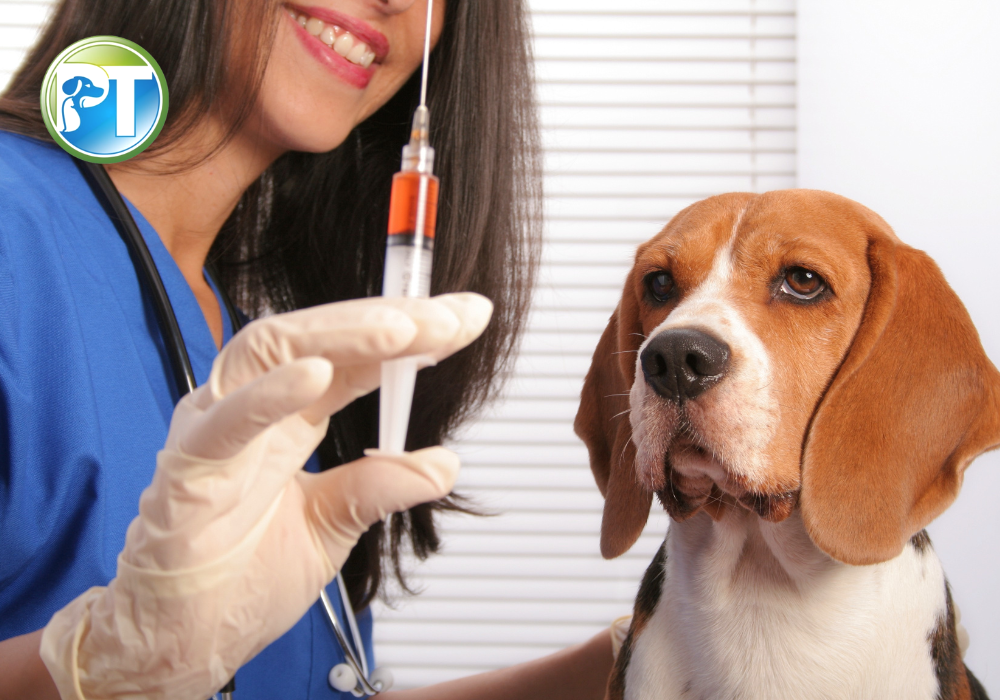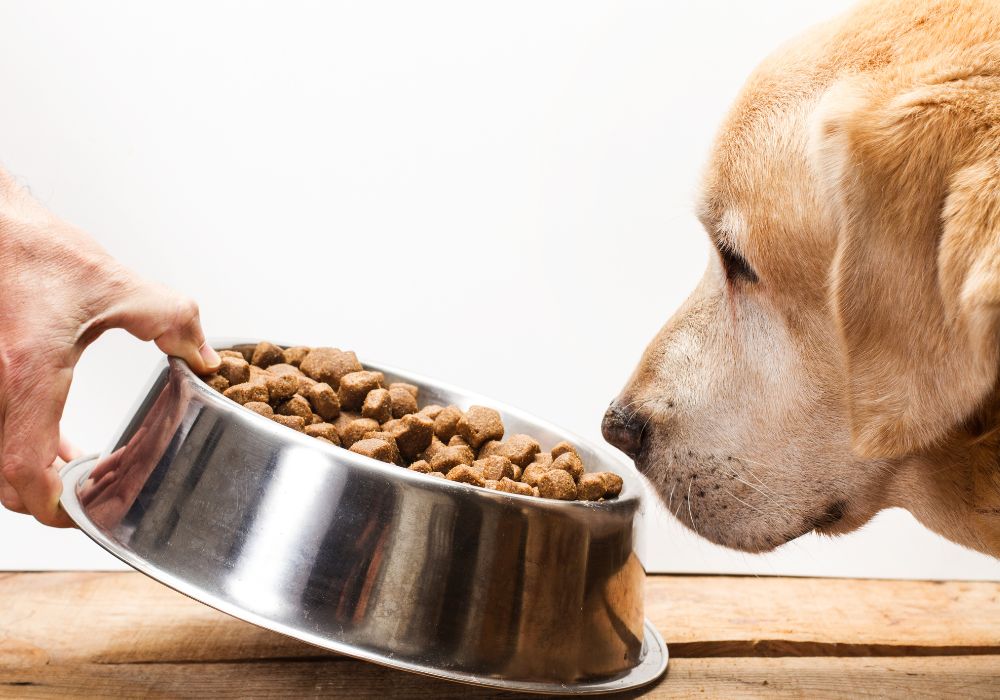5 Common Dog Health Problems and How to Prevent Them

As a dog owner, you want nothing more than for your furry friend to live a long, happy, and healthy life. However, just like humans, dogs can be prone to various health issues throughout their lifetime. By understanding common health problems and taking proactive preventative care, you can help your dog maintain optimal health and well-being.
In this blog, we'll explore a range of topics, from obesity and ear infections to periodontal disease and skin problems. We’ll provide you with the knowledge and tools necessary to keep your canine companion in tip-top shape.
5 Common Dog Health Problems
Here are five common health problems that affect dogs, along with tips for prevention and management. Let's dive in:
1. Obesity

Just like yummy treats and belly rubs, we love to spoil our furry friends. But sometimes, all that extra love can lead to a problem called obesity. This means your pup is carrying a bit more weight than their body is happy with.
Being too heavy can make it tough for your dog to play fetch, chase squirrels, or even just climb the stairs. Even worse, it can lead to serious health problems down the road, like sore joints, trouble breathing, or even a shorter lifespan.
So, how can we keep our pups healthy and fit? Here are some simple tips:
- Food Matters
Dogs need different foods at different stages of their life. Talk to your vet about the right kind of food for your puppy's age, size, and energy level. Remember, those yummy treats we love to give should be just that – treats! Too many can add up quickly.
- Portion Control is Key
Just like filling your water bowl, food needs to be measured too. Every bag of dog food will have a guide on how much to feed your pup based on their weight. Don't forget to factor in treats as well.
- Get Moving
Exercise is super important for both you and your pup! Aim for at least 30 minutes of fun activity each day. This could be a walk in the park, a game of fetch, or even a fun indoor playtime.
If you're ever worried about your dog's weight, the best thing to do is chat with your veterinarian. They can help you create a safe and healthy weight loss plan if needed, and answer any questions you might have.
2. Ear Infections

Ear infections are another common health issue in dogs, particularly those with some predisposing factors. Let's break down the causes, symptoms, prevention, and treatment of this uncomfortable condition.
Why Are Some Dogs More Prone to Ear Infections?
- Floppy ears: Breeds like Cocker Spaniels, Basset Hounds, and Bloodhounds have ears that trap moisture and debris, creating a warm, damp environment ideal for bacteria and yeast to grow.
- Allergies: Environmental or food allergies can inflame the skin lining the ear canal, making it more susceptible to infection.
- Other factors: Regular swimming, excessive earwax buildup, and foreign objects like foxtails or grass seeds can also irritate the ear canal leading to infection.
Signs of Ear Infection in Dogs
- Itchy ears: Frequent head shaking, pawing at the ears, or rubbing against furniture are all signs your dog's ears are bothering them.
- Visible signs of inflammation: Redness, swelling, and warmth around the ear canal are telltale signs of infection.
- Discharge: A dark or yellow discharge with a foul odor is a strong indicator of an infection.
Tips to Prevent Ear Infections in Dogs
- Regular cleaning: Use a veterinarian-recommended ear cleaner to gently remove excess wax and debris. But avoid over-cleaning, which can irritate the ears.
- Drying after water exposure: After swimming or bathing, thoroughly dry your dog's ears with a soft cloth to prevent moisture buildup.
- Addressing allergies: If allergies are suspected, consult your veterinarian to identify the trigger and manage the condition.
3. Arthritis and Joint Problems in Dogs

Arthritis and joint problems are a common concern for our canine companions, especially as they age. Arthritis is a general term for inflammation and degeneration of joints. It's a progressive condition, meaning it worsens over time, causing pain, stiffness, and reduced mobility. This can significantly impact a dog's quality of life, hindering everyday activities such as climbing stairs or going for walks.
The Culprits Behind Joint Pain
- Osteoarthritis (OA): This is the most frequent form of arthritis in dogs. It's a degenerative disease where the protective cartilage within the joints gradually wears away, causing pain, stiffness, and inflammation.
- Hip Dysplasia: A genetic condition primarily affecting large and giant breeds. In hip dysplasia, the hip socket doesn't properly form, leading to joint instability, pain, and early-onset arthritis.
Risk Factors for Arthritis
- Age: Just like humans, dogs become more susceptible to joint degeneration as they age.
- Weight: Excess weight puts significant strain on joints, accelerating cartilage breakdown and worsening arthritis symptoms.
- Previous Injuries: Injuries, especially those involving ligaments or bones near joints, can increase the risk of developing arthritis later in life.
- Breed Predisposition: Certain breeds like Labrador Retrievers, German Shepherds, and Bulldogs are more prone to hip dysplasia and other joint issues.
Tips for Managing Canine Arthritis
While there's no cure for arthritis, there are ways to manage it and improve your dog's quality of life. Here are some key strategies:
- Supportive Environment: Provide a soft, comfortable bed that promotes good posture and reduces pressure on joints. Ramps or steps can also help your dog navigate furniture safely.
- Weight Management: Maintaining a healthy weight is crucial for managing arthritis. Talk to your veterinarian about an ideal weight goal and a weight management plan.
- Low-Impact Exercise: Regular exercise is essential for maintaining muscle strength and joint flexibility. Opt for gentle activities like swimming, short walks on soft surfaces, or controlled leash play.
- Veterinary Care: Regular checkups with your veterinarian allow them to monitor your dog's arthritis and adjust treatment plans as needed. They may recommend joint supplements like glucosamine and chondroitin, pain medication, or physical therapy to improve mobility.
4. Periodontal Disease

Periodontal disease, often referred to as gum disease, is a serious threat to a dog's oral health and well-being. This progressive disease is caused by a buildup of plaque and tartar on the teeth.
Plaque is a sticky film containing bacteria that forms naturally on teeth after eating. If not removed through regular brushing or chewing, plaque hardens into tartar (calculus), which clings stubbornly to the tooth surface. As tartar accumulates, it irritates the gums, causing inflammation and infection (gingivitis). Left untreated, this infection can spread deeper, damaging the ligaments and bone supporting the teeth, eventually leading to tooth loss.
The Impact of Gum Disease
Periodontal disease isn't just about bad breath, although that's definitely a sign. The bacteria in the infected mouth can enter the bloodstream and travel to other organs, potentially affecting the heart, liver, and kidneys. This is why maintaining good oral health is crucial for your dog's overall well-being.
Fighting Back Against Gum Disease
The good news is that periodontal disease is largely preventable with a consistent dental care routine:
- Brushing: Make teeth brushing a regular part of your dog's grooming routine. Use a dog-friendly toothpaste and a soft-bristled brush designed for dogs. Aim to brush at least once a day, but even two to three times a week is better than nothing.
- Dental Chews and Toys: Provide your dog with dental chews and toys specifically designed to scrape away plaque and tartar buildup. Choose chews with the Veterinary Oral Health Council (VOHC) seal of approval to ensure they are effective and safe.
- Professional Dental Cleanings: Regular professional cleanings by your veterinarian are essential, especially for dogs prone to dental problems. These cleanings remove tartar buildup and allow your veterinarian to identify and address any underlying dental issues.
5. Skin Problems: Allergies, Infections, and Hot Spots

Skin problems rank among the top reasons dogs visit the veterinarian. Here, we'll delve into some frequent culprits:
1. Allergic Reactions: Dogs can also develop allergies to various things in their environment. These allergens could be:
- Flea Bites: These tiny pests not only cause discomfort but can also trigger allergic reactions in some dogs, leading to intense itching and irritated skin.
- Food Sensitivities: Certain ingredients in your dog's diet might be causing an allergic reaction. Symptoms can include itchy skin, redness, and even hair loss.
- Environmental Allergens: Pollen, dust mites, and mold can all trigger allergic reactions in dogs, manifesting as itchy skin, especially on the paws, belly, and face.
- Bacterial Infections: Often caused by scratches or wounds that become infected with bacteria. Signs include redness, swelling, and pus discharge.
- Yeast Infections: Warm, moist areas like skin folds are prone to yeast overgrowth, leading to itchiness and a reddish-brown discoloration.
- Underlying Allergies: Just like with other skin problems, allergies can set the stage for hot spots.
- Skin Irritants: Friction from a wet collar, insect bites, or even constant licking can irritate the skin and lead to hot spots.
How to Keep Your Dog's Skin Healthy
The good news is that many skin problems are preventable with a proactive approach:
- Flea and Tick Prevention: Regular use of a veterinarian-recommended flea and tick preventative is crucial. Fleas not only cause discomfort but can also worsen allergies.
- Dietary Management: If you suspect a food allergy, consult your veterinarian about an elimination diet to identify the culprit.
- Good Grooming Habits: Brushing your dog regularly removes allergens, dirt, and loose hair that can irritate the skin.
- Bathing (Done Right): Bathing with a gentle, dog-specific shampoo can soothe irritated skin. However, avoid over-bathing, which can dry out the skin and worsen the problem.
Promoting Your Dog's Health and Wellness
In addition to addressing specific health concerns, there are several key steps you can take to promote your dog's overall health and wellness:
- Regular Vet Check-ups: Schedule visits once or twice yearly to catch potential health issues early.
- Balanced Diet: Feed a high-quality, age-appropriate diet to maintain weight and prevent nutrient deficiencies.
- Hydration: Provide fresh, clean water at all times to support organ function and hydration.
- Exercise and Stimulation: Engage in daily walks, playtime, and training sessions to keep your dog physically and mentally sharp.
- Stress Management: Minimize stress and address behavioral issues with the help of a professional trainer for emotional well-being.
Final Thoughts
The human-animal bond is truly special. By taking an active role in your dog's health and happiness, you're not just giving them a good life. You're creating a lifetime of cherished memories together.
Remember, a healthy dog is a happy dog, and a happy dog is a source of endless love and loyalty. The journey you embark on together is a testament to the unwavering companionship between humans and their canine companions.
You might also enjoy...
-
Posted in
Pet Health


